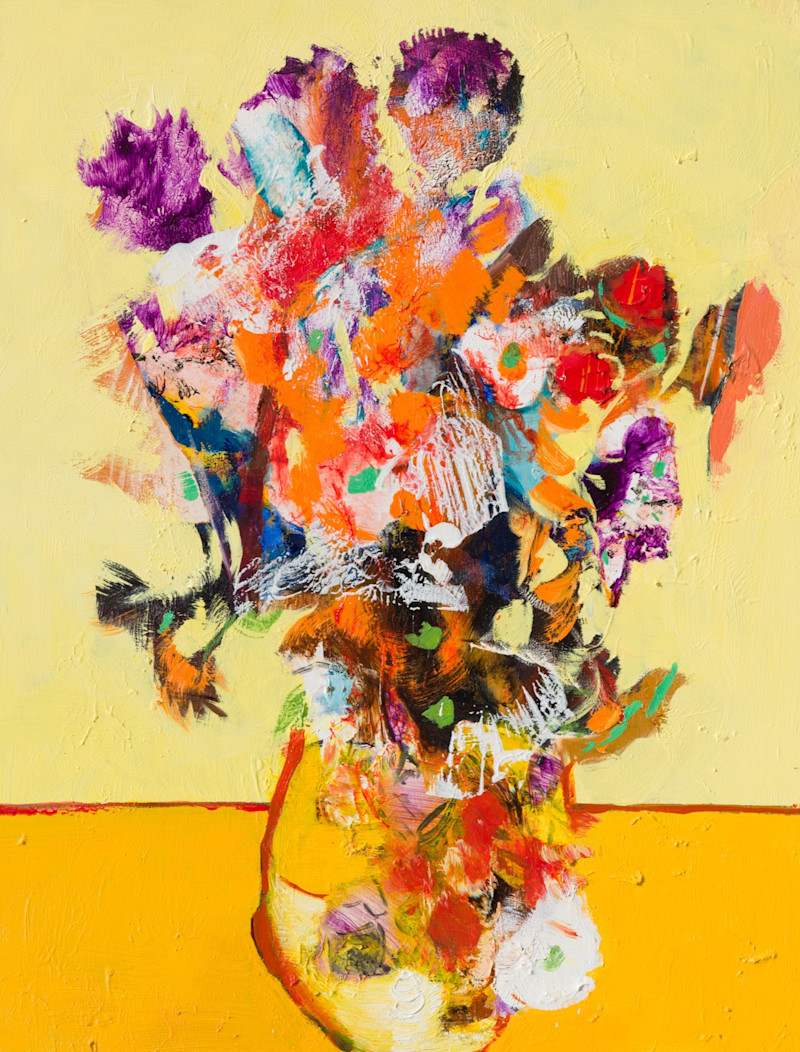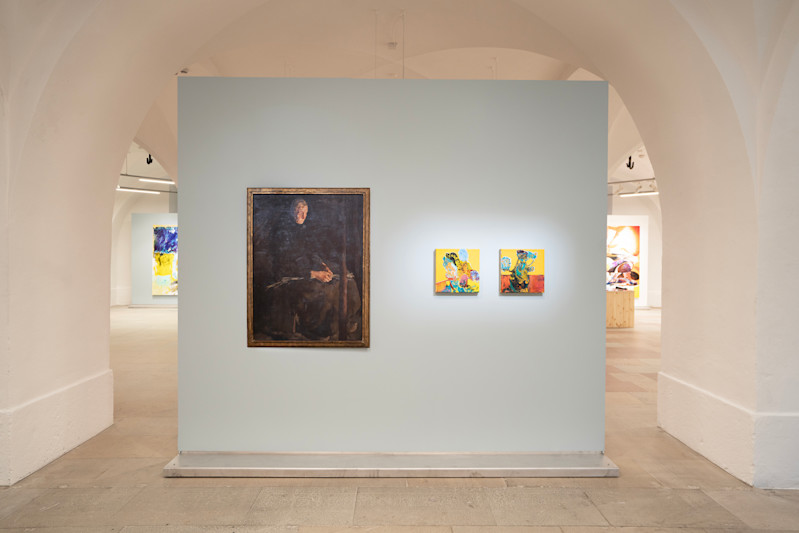About
Laserstein’s iconic Abend über Potsdam, painted in the turbulence of 1930s Berlin, has come to serve as a key piece and inspiration for Emmanuel Bornstein, whose vibrant works are layered with abstracted explorations of memory and identity in the present. Laserstein’s portrayal of waiting and uncertainty during a period of great social and political unrest parallels Bornstein’s contemporary Shelter and Pensée series, where unseen threats linger beneath the surface. Pensée allows us to reflect on how art can mirror the psychological spaces we occupy when faced with exile or displacement, and how these themes remain continually relevant today.
The interaction between these two artists reveals both their differences and the subtle connections that tie them together. Laserstein, who sought refuge in Sweden from Nazi Germany, turned to portraiture and still lifes as a means of survival and artistic expression. Her delicate flower paintings, created in exile, evoke a longing for home—a theme that is reflected also in Bornstein’s Pensée series, where the contours of flowers dissolve into abstraction, symbolizing fragmented memory and identity. Both artists ponder belonging and loss, though their approaches and styles differ dramatically.
A key element of this exhibition is the way historical context enriches our understanding of these works. Bornstein’s personal connection to the past, particularly through the story of his grandmother’s resistance during World War II, creates a bridge to Laserstein’s time. His exploration of survival, memory, and hope speaks not only to his own heritage but also to universal themes that extend across generations. The conversation between Bornstein and Laserstein’s works is both intimate and expansive, inviting us to consider how personal and collective histories merge in art.
Through Pensée, we may meditate on how art reflects and shapes our understanding of time, trauma, and resilience. The dialogue between Laserstein and Bornstein encourages us to think about how we navigate moments of uncertainty and displacement in our own lives. Their work compels us to ask: How do we navigate moments of waiting and uncertainty in our own lives? How do art and memory serve as shelters in times of crisis? This exhibition is a meditation on these questions, and a testament to the fact that art can grant us with a deeper understanding of the complexities of the human experience.































